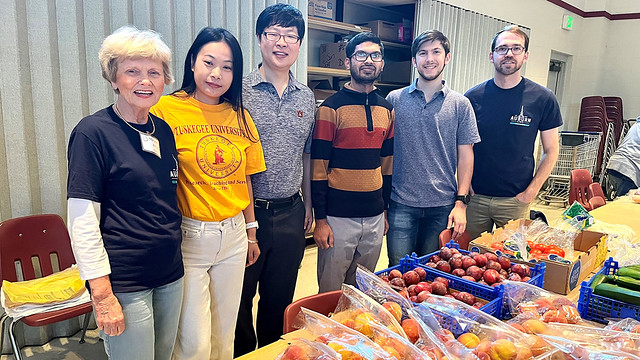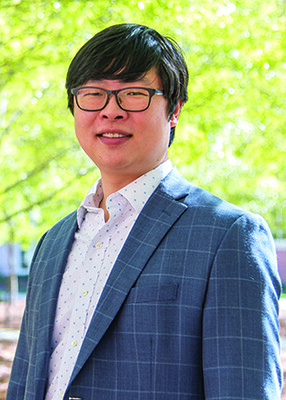Researchers use machine learning to assist state food pantries with inventory
Article body
Food distribution centers across Alabama have questions. A team of researchers at Auburn University and Tuskegee University are searching for answers.
Which foods and supplies are most needed, where are they most needed—and when? Excessive foods—including perishables—might be wasted if supplies are too great. On the other hand, thin supplies could run out quickly, and people depending on this service from their local food pantry might receive nothing.
As the fifth-poorest state in the nation, 17 percent of adults and 23 percent of children in Alabama struggle with food insecurity, according to the Alabama Department of Public Health.
Yin Sun, assistant professor in the Department of Electrical Engineering at Auburn University’s Samuel Ginn College of Engineering, is part of a multi-disciplinary research project, “Strengthening the Alabama Emergency Food Distribution System Using Machine Learning: Impact on Household & Community Food and Nutrition Security During Disasters,” across two Alabama universities aimed at solving this problem for the state.
“Many distribution centers don’t know how many people are coming to collect food,” said Sun, who is joined on the project by Tuskegee University’s Rui Chen, Robert Zabawa, Eunice Bonsi and Souleymane Fall. “Sometimes, they have a high number of people come to collect food. Sometimes, they have a low number. This matters greatly when you prepare boxes for people to come pick up. Some of these foods are vegetables, or others, which might require refrigeration or a means of storage to keep the food fresh. These centers constantly deal with this problem.
“So many resources, volunteers, time, money and human effort are dedicated to food pantries across the state and nation. It’s very important that they serve with the best efficiency possible. That said, we have developed a machine learning algorithm that is trying to predict how many people might come pick up food. This can help the organization from a supply chain and labor resource point of view.”
Sun and doctoral students in the university’s Real Time Networking Lab are utilizing data accrued since 2016 from a variety of Alabama food distribution centers in Lee County, including the Food Bank of East Alabama, Lakeview Baptist Church and Auburn United Methodist Church, to develop machine learning algorithms that should help bolster the network’s food demand forecasting models, which will vary from location. Sun said food remaining from these distribution centers is often relocated to the Campus Food Pantry at Auburn University.
“Developing an algorithm based on factual data will reduce the margin of error that is often a result of guessing based on past experiences,” Sun said. “We are utilizing historical weekly data and socio-economic data. It’s also important to understand how many days schools are open because children are fed from the schools.
“This will impact whether parents are coming to pick up food on those days. Then, we must also consider customer personal income. We then weigh these factors into an algorithm that can best create an accurate model.”
Sun, who will use what he’s learning through this experience to co-teach “Applied Statistical and Machine Learning” to graduate and undergraduate students at Auburn and Tuskegee in spring 2023, said the team will soon collect data from more food pantries across the state—including the state’s Black Belt—to improve the robustness of synthetic data generalization.
“Many research topics are regarded as theoretical,” Sun said. “But this is an area where we have an opportunity to immediately give something beneficial back to society. I’ve been working in Auburn for the past five years, and it was very important for me and our students to do something for our community and the state.
“Our students are learning cutting-edge research and new technologies. Through this project, they are transferring that knowledge for the greater good.”
Related Media
Media interested in this story can contact Communications Director Preston Sparks at (334) 844-9999 or preston.sparks@auburn.edu.
Auburn University is a nationally ranked land grant institution recognized for its commitment to world-class scholarship, interdisciplinary research with an elite, top-tier Carnegie R1 classification, life-changing outreach with Carnegie’s Community Engagement designation and an undergraduate education experience second to none. Auburn is home to more than 30,000 students, and its faculty and research partners collaborate to develop and deliver meaningful scholarship, science and technology-based advancements that meet pressing regional, national and global needs. Auburn’s commitment to active student engagement, professional success and public/private partnership drives a growing reputation for outreach and extension that delivers broad economic, health and societal impact.






